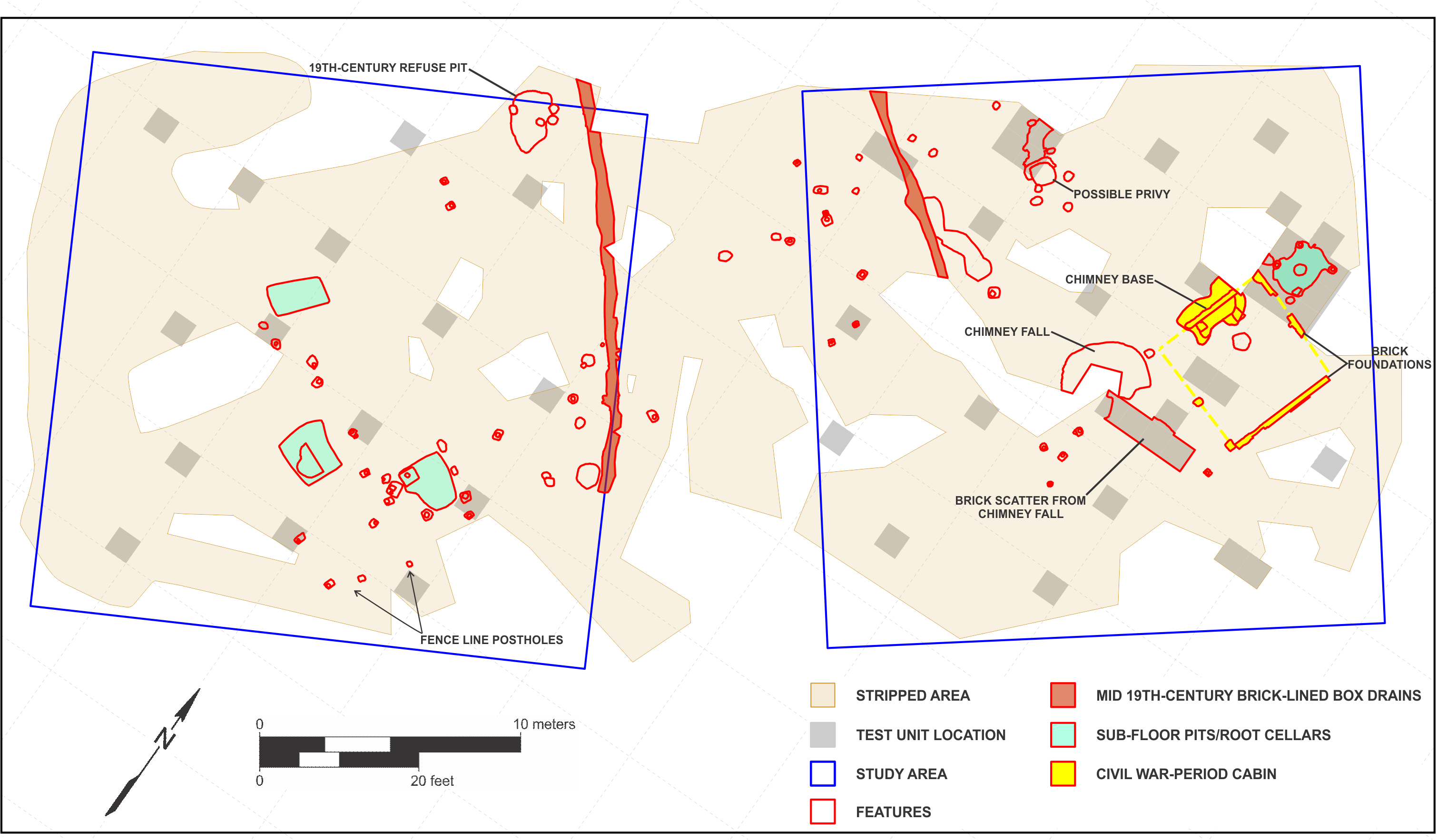| After the test unit stage, the archaeologists used a combination of heavy machinery and hand excavation with flat shovels and trowels to expose the subsoil and any features cut into it. The results revealed traces of at least four slave quarter buildings that date to the first period of intensive site use from 1800 to the 1840s. Three are in the southwestern part of the site and a fourth at the northeast end. These buildings correspond to the location of sub-floor pits/root cellars that would have been dug into their earth floors or below floorboards. A distinctive pattern of foundations, pier support remains, and a chimney base (highlighted in yellow) marks out the remnant of a 16-by-16-foot cabin likely built by Union soldiers. Archaeological evidence also points to the soldier’s reuse and modification of the existing slave cabin (shaded green) at northeast end of the site. Other notable features include fence postholes, brick-lined box drains that carried excess rainwater off the site to the ravine, a trash pit, and a possible privy or outhouse. |
|
|















